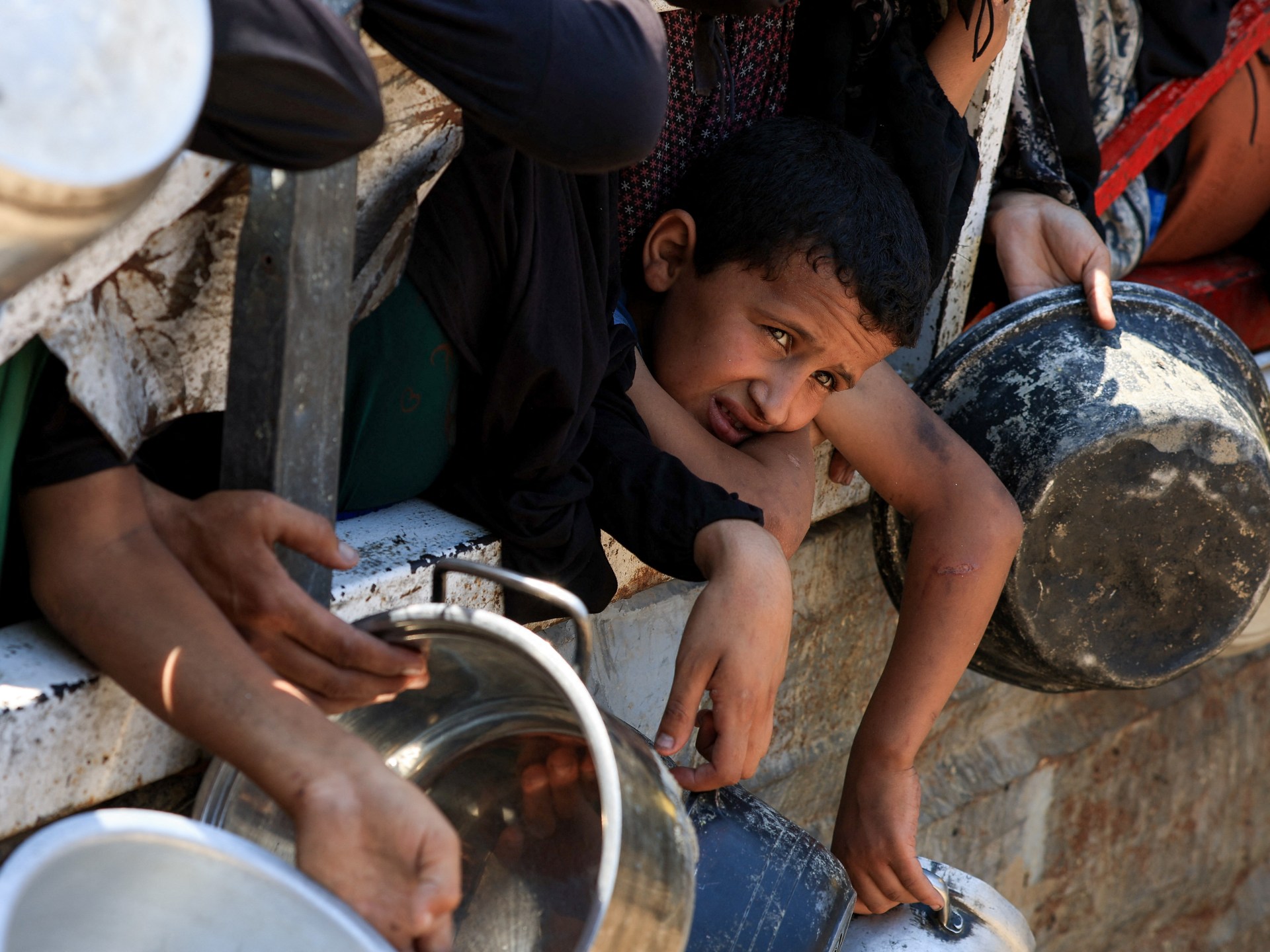Washington, DC – During the first six months of his second term, Donald Trump pushed the limits of US presidential power while aiming to reorient US foreign policy to “America First”.
His first months in office have also offered a window into the future of his administration’s approach to war-making, what analysts characterise as an at times contradictory tactic that oscillates between avowed anti-interventionism and quicksilver military attacks, justified as “peace through strength”.
While questions remain over whether Trump has indeed pursued a coherent strategy when it comes to direct US involvement in international conflict, one thing has been clear in the first portion of Trump’s second four-year term: US air attacks, long Washington’s tool of choice since launching the so-called “war on terror” in the early 2000s, have again surged.
According to a report released last week by the Armed Conflict Location and Event Data Project (ACLED), since Trump’s re-entry into office on January 20, the US has carried out 529 air attacks in 240 locations across the Middle East, Central Asia and Africa.
That figure, which accounts for just the first five months of Trump’s four-year term as president, is already nearing the 555 attacks launched by the administration of US President Joe Biden over his whole term from 2021 to 2025.
“The most extreme tool at his disposal – targeted airstrikes – is being used not as a last resort, but as the first move,” Clionadh Raleigh, a professor of political geography and conflict and founder of ACLED, said in a statement accompanying the report.
“While Trump has repeatedly promised to end America’s ‘forever wars’, he has rarely elaborated on how. These early months suggest the plan may be to use overwhelming firepower to end fights before they begin, or before they drag on.”
A ‘Trump Doctrine’?
Trump’s willingness to unleash lethal force abroad – and the inherent risk that the brazen approach carries of dragging the US into protracted conflict – has already roiled influential segments of the president’s Make America Great Again (MAGA) base, coming to a head over Trump’s six-week bombing campaign against the Houthis in Yemen and, more recently, his June decision to strike three nuclear facilities in Iran amid Israel’s offensive on its neighbour.
In turn, Trump’s top officials have sought to bring coherence to the strategy, with Vice President JD Vance in late June offering the clearest vision yet of a Trump blueprint for foreign intervention.
“What I call the ‘Trump Doctrine’ is quite simple,” Vance said at the Ohio speech. “Number one, you articulate a clear American interest, and that’s in this case that Iran can’t have a nuclear weapon.”
“Number two, you try to aggressively diplomatically solve that problem,” he said.
“And number three, when you can’t solve it diplomatically, you use overwhelming military power to solve it, and then you get the hell out of there before it ever becomes a protracted conflict.”
But the reality of Trump’s early diplomatic and military adventures has not matched the vision outlined by Vance, according to Michael Wahid Hanna, the US Program Director at Crisis Group. He called the statement an attempt to “retrofit coherence”.
While Hanna cautioned against putting too much stock into a unified strategy, he did point to one “consistent thread”: a diplomatic approach that appears “haphazard, not fully conceived, and characterised by impatience”.
“For all of the talk about being a peacemaker and wanting to see quick deals, Trump has a particularly unrealistic view of the ways in which diplomacy can work,” he told Al Jazeera.
The US president had vowed to transform peace efforts in the Russia-Ukraine war, but an earlier pressure campaign against Ukrainian President Volodymyr Zelenskyy has since seen Trump circle back to the Biden administration’s hardline approach to Russia, with little progress made in between.
After an initial ceasefire in Gaza, Trump officials have failed to make meaningful progress in reigning in Israel’s war, leaving the threat of knock-on conflicts, including with Iran and the Houthis in Yemen, unanswered.
Earlier diplomatic overtures to address Iran’s nuclear programme stalled as Trump took a maximalist approach seeking to block any uranium enrichment. The effort dissolved after the US failed to constrain Israel’s military campaign against Tehran, as the US continues to provide billions in military funding to the “ironclad ally”.
“It’s hard to argue, as Vance did, that the United States has really pushed as hard as they can on diplomacy,” Hanna told Al Jazeera.
Under Vance’s logic, he added, “that leaves them with no other means than to respond militarily”.
‘Bomb first and ask questions later’?
The early emphasis on air attacks has been accompanied by vows by Trump and his Secretary of Defence Pete Hegseth to restore a “warrior ethos” within the US military.
Indeed, Trump has appeared to relish the military actions, posting a video of the attack on an ISIL (ISIS) affiliated target in Somalia on February 1, just 10 days after taking office.
He made a point to draw a comparison to Biden, who tightened rules of engagement policies Trump had loosened during his first term and entered office vowing to severely limit the reliance on US strikes.
Trump wrote that “Biden and his cronies wouldn’t act quickly enough to get the job done”.
“I did! The message to ISIS and all others who would attack Americans is that “WE WILL FIND YOU, AND WE WILL KILL YOU!”
All told since taking office six months ago, Trump has carried out at least 44 air strikes in Somalia, where the US has long targeted both a local ISIL offshoot and al-Shabab, according to ACLED data. The Biden administration carried out just over 60 such strikes during his entire four years in office.
The US president has posted similarly boastful messages about strikes in Yemen, where his administration conducted a bombing campaign from March to May, accounting for the vast majority of overall strikes during his second term, as well as US strikes on Iran’s nuclear facilities, which Trump declared were “obliterated like nobody’s ever seen before”, long before any in-depth assessment had been made.
Raleigh, who is also a professor of political geography and conflict at the University of Sussex, said the increase could possibly be attributed to Trump’s pivot away from the soft-power policy of Biden, which has included shearing down the US State Department and dismantling the US foreign aid apparatus.
That could further be viewed as an effort by Trump to place the US as a “player in a new internationalised conflict environment”, where overall violence by state actors on foreign soil has increased steadily in recent years, currently accounting for 30 percent of all violent events ACLED tracks globally.
“But I would say there’s still no clear Trump doctrine, as much as Vance wants to claim that there is,” Raleigh told Al Jazeera. “And at the moment, it’s looking a little bit like ‘bomb first and ask questions later.’”
That approach has proven to have particularly deadly consequences, according to Emily Tripp, the director of Airwars. She drew a parallel to Trump’s first term, when he also surged air strikes, outpacing those of his predecessor, former President Barack Obama, who himself oversaw an expansion of drone warfare abroad.
The monitor has tracked 224 reported civilian casualties in Yemen from US strikes under Trump in 2025, nearly totaling the 258 reported civilian casualties from US actions in the country during the 23 years prior. The administration has also used particularly powerful – and expensive – munitions in its strikes, which Airwars has assessed as appearing to have been deployed against a broader set of targets than under Biden.
Two of the Trump administration’s strikes on Yemen, one on Ras Isa Port and another on a migrant detention centre in Saada, have been deemed possible war crimes by Amnesty International and Human Rights Watch.
“That’s not typical, or necessarily something you’d expect in a campaign whose remit, as defined by Trump, Hegseth, and [US Central Command], is on largely economic targets,” Tripp told Al Jazeera.
“There’s really no reason for there to be such high levels of civilian harm,” she said.
Tripp added she was still waiting to assess how the Pentagon approaches civilian casualty investigations and transparency under Trump’s second term.
Questions over efficacy
It remains unclear whether the administration’s reliance on swift and powerful military strikes will actually prove effective in keeping the US troops out of protracted conflict.
While a tenuous ceasefire continues to hold with the Houthis, the results of the US bombing campaign “have been pretty underwhelming”, the Crisis Group’s Hanna said, noting that few underlying conditions have changed.
The group has continued to strike vessels in the Red Sea and to launch missiles at Israel in opposition to the war in Gaza. An attack in early July prompted State Department spokesperson Tammy Bruce to warn the US “will continue to take necessary action to protect freedom of navigation and commercial shipping”.
The jury also remains out on whether Trump’s strikes on Iran’s nuclear facilities will lead to a diplomatic breakthrough on Iran’s nuclear programme, as the White House has maintained. Little progress has been made since a ceasefire was reached shortly after Tehran launched retaliatory strikes on a US base in Qatar.
Crisis Group’s Hanna assessed that Trump has relied on air strikes in part because they have become somewhat “antiseptic” in US society, with their toll “shielded from a lot of public scrutiny”.
But, he added: “There are limits in terms of what air power alone can do…That’s just the reality.”




Leave a Comment